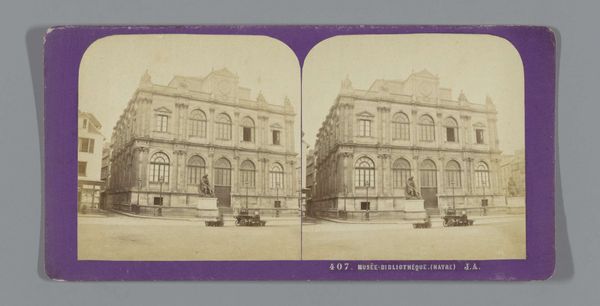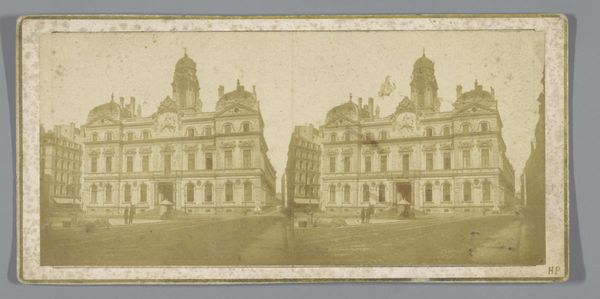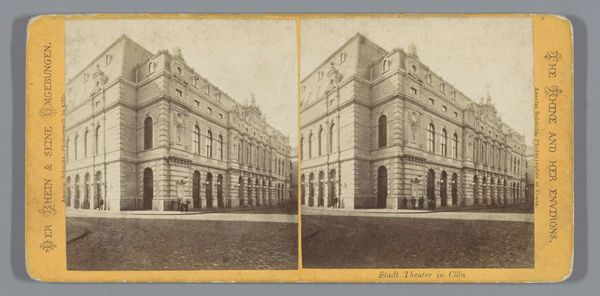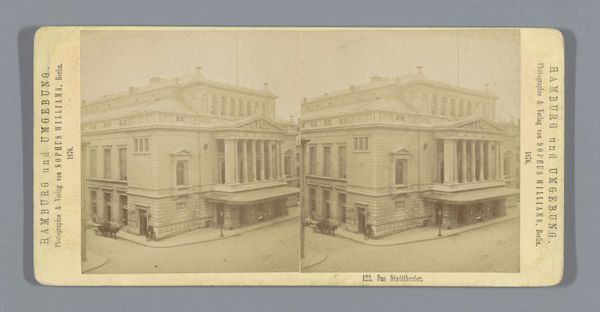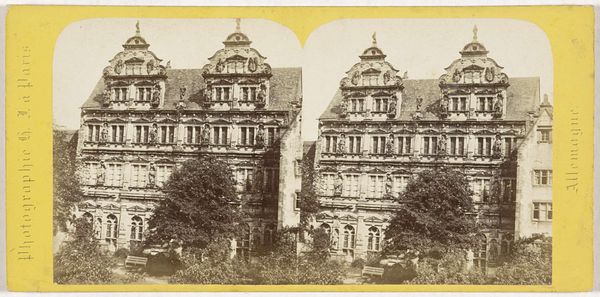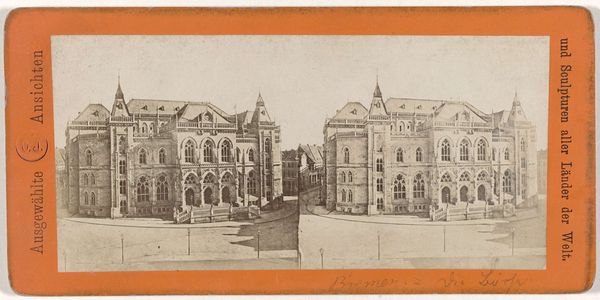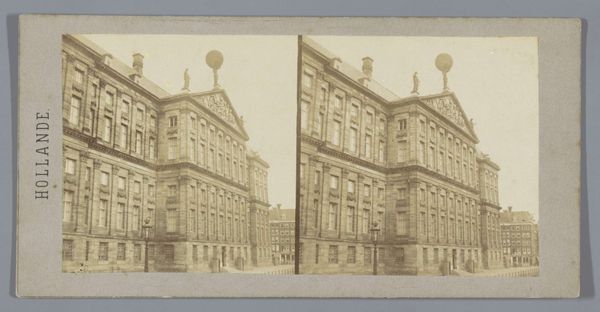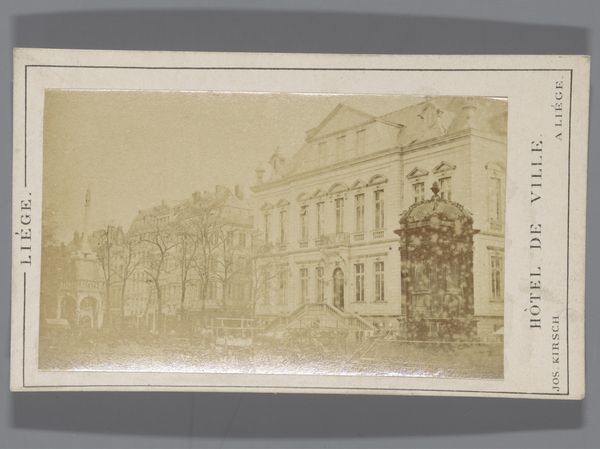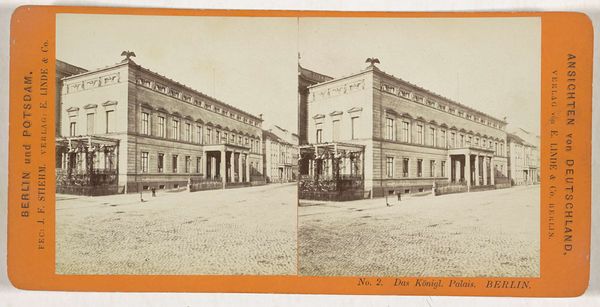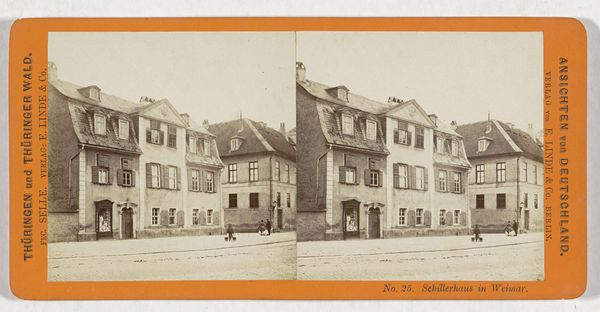
Dimensions: height 85 mm, width 170 mm
Copyright: Rijks Museum: Open Domain
Curator: This albumen print from around 1880 captures a section of the facade of Schloss Heidelberg, by Sophus Williams. It offers a fascinating glimpse into how architecture was documented and consumed in that era. Editor: It’s beautiful, although at first glance, the faded sepia tones lend it a somewhat melancholic feel. The castle, or what we see of it, appears imposing yet softened by the surrounding trees. Curator: The romantic style is quite evident, with the architecture presented almost as a relic against the landscape. Consider how photography, during this period, began to shape public perception of historical sites, almost democratizing access. Editor: Absolutely, but it's also framing it from a very particular perspective. Who gets to see these monuments, and whose narratives are prioritized when preserving and showcasing architectural heritage? This building undoubtedly holds centuries of social stratification and power dynamics embedded in its very stones. Curator: Indeed. And note how the use of stereoscopic format - providing a three-dimensional view when viewed through a special viewer - heightens the sense of realism, pulling the viewer into the scene. Editor: I also consider the very nature of this image’s preservation and circulation. The print format suggests it was probably fairly accessible; not exclusive to elites in the same way that the actual building was at that time. I am thinking about it being produced and marketed as an item in the photographic publishing market as a way for people to gain understanding, a grasp of something unattainable in real life. Curator: A vital observation. This image presents the past, literally, for consumption. Editor: Examining this photographic image now, through the lens of time and contemporary theory, it certainly brings questions to the fore. The framing of architectural romanticism and its interaction with notions of privilege, accessibility and cultural representation—we can't shy away from these conversations. Curator: I agree entirely; even a seemingly straightforward image like this allows us to address wider, crucial dialogues on heritage, history, and their complex intersection with the present. Editor: And these questions surrounding the documentation, access, and perception of monuments ultimately reveal an uneasy sense of power relations that endure today.
Comments
No comments
Be the first to comment and join the conversation on the ultimate creative platform.


